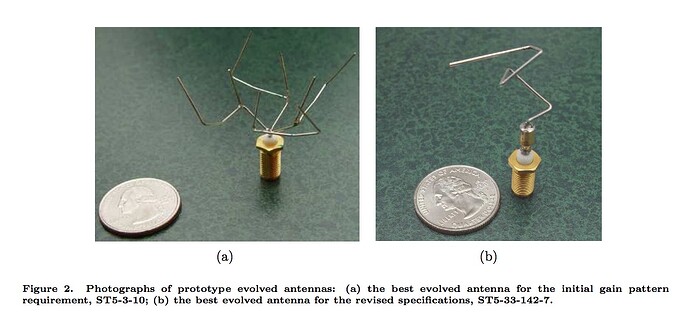It’s time to produce a proper exposition on the reasons why “design” apologetics is a dishonest bait and switch on a grand scale. This will be a substantial dissertiation, so prepare yourselves for a long read.
First, let’s open this dissertation with perhaps the most historically famous piece of “design” apologetics, courtesy of William Paley:
When peddling this particular piece of apologetics, Paley apparently failed to notice some elementary facts, that destroy his apologetics at source. Namely:
[1] Human artefacts and entities in the biosphere are conspicuously different from each other - watches, for example, have shiny metal parts never seen in any animals or plants;
[2] Watches are not self-replicating entities, whereas plants and animals will reproduce without any human intervention whatsoever.
Indeed, no less a person than David Hume, anticipated the holes in this apologetics even before Paley made said apologetics public, and indeed, this erroneous comparison is one of the objections he raised in his own writings on the matter, along with another objection I will cover in ore detail in due course.
But, there’s an interesting issue to present here, that is on its own a serious objection to “design” apologetics, namely that even some instances of HUMAN design activity take years of training to detect reliably. For example, here’s a nice little image for everyone to peruse:
That collection of stones looks like any other junble of stones you might see, for example, on a shingle beach. But, and here’s the fun part, one of those stones is actually a Palaeolithic stone tool fashioned by one of our hominid ancestors. For those who think detecting “design” is purportedly “obvious”, can any of you holding this view tell me which of those rocks is the “designed” rock?
Palaeontologists spend years learning how to tell stone tools apart from ordinary rocks. Now if they have to spend years learning how to detect “design” arising from the hand of Palaeolithic hominids, what makes mythology fanboys so sure that the world around them is “designed”? Indeed, in my experience, mythology fanboys don’t know what is required to convert the “design” assertion into something other than the product of their rectal passages, and I won’t spoil the game by spoon feeding them in the manner to which they’ve become accustomed - no, anyone who wants to peddle the “design” assertion will have to do their own homework here, and demonstrate that they have actually thought about the matter, instead of simply lapping up whatever complacent eruptions were fed to them by their assorted “holy men”. Of course, other considerations apply here that I shall come to in due course, but for the purpose of this part of the exercise, I’ll leave those to one side for a moment
However, there’s an even more insidious bad comparison being made here, namely, between human design activities, for which of course we have voluminous evidence, and what I shall refer to as “supernatural magic poofing”, for which we have zero evidence, and which furthermore, is asserted to involve purported “perfect foreknowledge” on the part of the cartoon magic man in question, of the operation of parts both in isolation and when integrated into a larger whole.
Except that there’s one gigantic nest of bluebottles in this particular ointment. Courtesy of the fact that human design activities have never involved “perfect foreknowledge” of anything. At best, human design starts off with a limited understanding of what worked previously: when humans began “desigining” entiti4es such as stone tools, they were starting from a knowledge base of zero, and had to arrive at working solutions via trial and error.
Indeed, when one analyses human design activity properly, you find that it consists of the following steps:
[1] Try out some ideas;
[2] Discard the failures;
[3] Build upon the successes.
Now, what other process operates in a like manner? That’s right - evolution. Which consists of the following steps:
[1] Generate lots of variations;
[2] Discard the failures;
[3] Build upon the sccesses.
Now because human design activities bear far more similarity to evolution than to supernatural magic poofing, using human design activities to try and prop up the idea that supernatural magic poofing was responsible for the biosphere is a bait and switch, and a paarticularly mendacious one at that. Furthermore, it’s yet another example of how mythology fanboys try to use tactics of this sort as apologetic spells to conjufre their various cartoon magic men into existence, no matter how much reality points and laughs at this exercise in futility.
In order to emphasise this vast canyon between human design activities and supernatural magic poofing, I’ll point out that the history of watchmaking itself destroys Paley’s apologetics, courtesy of the fact that it too, bears far more resemblance to an evolutionary process than to any process involving “perfect foreknowledge”. When one traces the history of watches, one finds again a process of gradual development involving trial and error. The first portable clocks were still far too big to be carried in a pocket, let alone worn upon a wrist, and the first such instances of these, back in the 15th century, only had an hour hand. The accuracy of these devices was so low that they were little more than expensive toys for rich people.
It took finite time for watchmakers to learn, for example, that the force delivered by a mainspring is not a constant, and that some means of taking account of this had to be devised, and the first of these, a device known as a stackfreed, was abandoned after about 100 years because of the undesirable friction it introduced into the mechanism. The fusee, a different device, persisted for longer, but was eventually abandoned in the 19th century when a superior solution arose.
The balance spring only appeared in 1657, and the first watches with a minute hand only appeared around 1680 as a result of the development of the balance spring. The verge escapement, which had been used in large pendulum driven clocks since the 13th century, was replaced by the cylinder escapement in 1695 - it took humans three hundred years or so to move on to this better idea.
We had to wait until 1759 for the lever escapement, which, ironically, only made major inroads into Swiss watchmaking around 1900. We had to wait until 1923 for the first successful self-winding system, based upon converting the wearer’s arm motion into rotary motion that kept the mainspring tension constant. The Incabloc shock protection system, to protect jewel bearings from critical failure stresses if the watch was dropped, wasn’t invented until 1934. The first working electrically powered watches did not appear until 1957.
Once again, the history of watches is replete with trial and error, discarding of failures, and building upon successes, and the development of the modern wrist watch bears more resemblance to an evolutionary process than to supernatural magic poofing.
But there’s more. I invite everyone to take a peek at this hilarious collection of early failures, in the race to be the first to construct a working aeroplane:
The idea that there was “perfect foreknowledge” involved in that little lot, is manifestly absurd to anyone with functioning neurons.
Of course, even supposedly mature technologies have their instances of coming unstuck. Perhaps the classic example of this from the world of commercial aviation is Air France Flight 296, which was supposed to showcase a new generation of “intellgent” autopilots capable of keeping an airliner out of dangerous parts of the flight envelope. Here’s what happened in that instance:
Then, of course, there’s the world of fossil fuel powered cars. These are entities that have 140 years or so of continuous (and well funded) research and development behind them, but even this history doesn’t stop the occurrence of such events as model recalls due to design flaws. Indeed, apart from flaws that were never intended to reach the public (see, for example the Toyota sticking accelerator pedal issue, which almost derailed the previously superb record of that manufacturer), there are instances of flaws entering the public domain that can only be attributed to malicious corporate greed. See, for example, the Ford Pinto, which had a habit of cremating its owners after a rear end shunt, and the lurid revelations following the emergence of this lethal piece of design. For that matter, a good number of American car owners will be ruefully pondering what sort of “foreknowledge” was involved in the 5.4 litre 3 valve engine fitted to numerous car models, covered in some detail in this 16 minute video clip from a car repair shop:
“Design” apologetics is also a bait and switch in another manner - namely, pedlars thereof have a habit of presenting one of the many false dichotomies that the usual suspects are so fond of, in this case, the false dichotomy between “chance” and “design”. The third option that all of the pedlars of “design” apologetics leave out, because that third option is so fatal to said apologetics, is testable natural processes. Indeed, one of the more mendacious aspects of “design” apologetics, consists of deliberately avoiding addressing this third option, precisely because scientists have established that testable natural processes are sufficient to account for most, if not all, of the entities asserted to require an “intelligent designer”. Indeed, Hume, who I cited earlier, pointed to this as an objection even in the absence of modern scientific data, an objection that became all the more lethal to “design” apologetics once the data was collected.
I will, of course, leave aside the matter of mythology fanboy abuse of words such as “random” for another post (or possibly even another topic), because that subject deserves a lengthy dissertation on its own. But I’ll simply mention that issue here as being a frequently observed and well-documented part of the aetiology of “design” apologetics.
But that modern scientific data, to the effect that testable natural processes can deliver end results that appear “designed” to the naive observer, now provides the biggest objection to “design” apologetics, and highlights in spectacular manner how duplicitous that apologetics really is at source. The modern version of said apologetics is now reduced, at bottom, to “I’m too stupid to understand how testable natural processes work, therefore Magic Man did it”.
Even if the pedlars of this apologetics addressed these mutliple issues, and removed all the mendacity and the baits and switches from “design” apologetics, this would still leave another issue untouched - namely, if an “intelligent designer” is something other than wishful thinking on the part of the gullible and uneducated, determining the existence of this entity, and determining the identity of this entity, are two separate questions. Just because someone answers the first question in the affirmative, doesn’t mean that the second question is also settled by any means, and there is no reason why any genuinely existing “intelligent designer” has to be a cartoon magic man from a goat herder mythology.
Indeed, one of the more hilarious outcomes of scientific investigation, is that the only “designer” we have actual evidence for, consists of, yet again, testable natural processes, and that they don’t even have to be “intelligent” to achieve the end result. In the case of the biosphere, the vast mountains of evidence obtained over the past 150 years point to evolution being your “designer”, not a cartoon magic man.
As if to reinforce the point, scientists are now increasingly turning to evolutionary algorithms to “design” a range of human artefacts. One spectacular example is provided by this scientific paper:
Automated Antenna Design With Evolutionary Algorithms by Gregory S. Hornby, Al Globus, Derek S. Linden, and Jason D. Lohn, American Institute of Aeronautics & Astronautics, 1-8 (2006)
The full paper is downloadable from here and here, and the article on the NASA website covering this can be found here and here, and here’s a profile of the author.
Here’s an illustration of the antenna they produced using evolutionary algorithms:
This communications antenna was not only “designed” using evolutionary algorithms, as covered in that paper, but was constructed, then flown and tested on an actual space mission, and found to work better than many antennae designed by humans.
I think this covers relevant bases.



